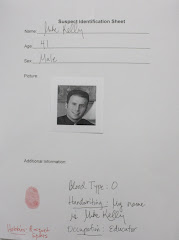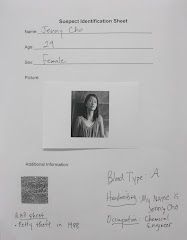1. History of Handwriting:
Handwriting was first formed as standardized pictures, or pictographs, throughout different cultures. Writing is defined as a system of agreed-upon symbols used to communicate and represent ideas. The first three writing systems were created in Sumer [cuneiform] in 3000 BC, Egypt [hieroglyphics] in 2800 BC, and China [Kanji] in 1800 BC. Writing’s expansion allowed for archives of theories, history, and laws to be recorded, along with the creation of literature. As more things became known to civilizations, more symbols were needed. This was the start of ideographs, or abstract symbols that elaborated on pictographs.
Graphology, the study and analysis of handwriting, first started as a device to analyze one’s personality. Aristotle said, "Spoken words are the symbols of mental experience, and written words are the symbols of spoken words. Just as men have not the same speech sounds, so all men have not the same writing."
It was then elaborated upon in many countries to find that no one’s handwriting was exactly the same. A list of common inconsistencies was made and is used to this day that can detect differences.
2. Inaccuracy in Handwriting Analysis:
There are three (3) main flaws in the usual methods for fingerprint analysis. The first is that no useful connection can be made between the writing of uppercase and the writing of lowercase letters. The second is that use of drugs, being sick, or lack of sleep can drastically change the appearance of anyone’s handwriting. The third is the common lack of helpful exemplars, models to base handwriting off of.
3. Techniques or Indicators of Forgery:
Twelve Factors of Handwriting Analysis:
1. Line quality: Do the letters flow or are they written with very intent strokes?
2. Spacing of words and letters: What is the average space between words and letters?
3. Ratio of height, width, and size of letters: Are the letters consistent in height, width, and size?
4. Lifting pen: Does the author lift his or her pen to stop writing a word and start a new word?
5. Connecting strokes: How are the capital letters connected to lower-case letters?
6. Strokes to begin and end: Where does the letter begin and end on a page?
7. Unusual letter formation: Are there any letters written with unusual slants or angles? Are some letters printed rather than written in cursive?
8. Pen pressure: How much pen pressure is applied on upward and downward strokes?
9. Slant: Do letters slant to the left or right? If slant is pronounced, a protractor may be used to determine the degree.
10. Baseline habits: Does the author write on the line or does the writing go above or below the line?
11. Fancy writing habits: Are there any unusual curls or loops or unique styles?
12. Placement of diacritics: How does the author cross the t’s or dot the i’s?
4. Pictures/Analysis Practice:
First, we tried to duplicate our group's handwriting free-hand. We then took notes on the side, based on the twelve factors, to describe what we saw was different.
Next, we attempted to trace our group's writing. Everyone in my group agreed that this was more difficult than copying free-hand. We wrote notes on the side as we did before.
Last, we simulated a forged check. We each wrote a check, signed as Joseph John Doe, and ripped it into pieces. We swapped checks and then reassembled them. We then went to the stations around the room, each had a sample of someone's handwriting, and tried to match them.







No comments:
Post a Comment